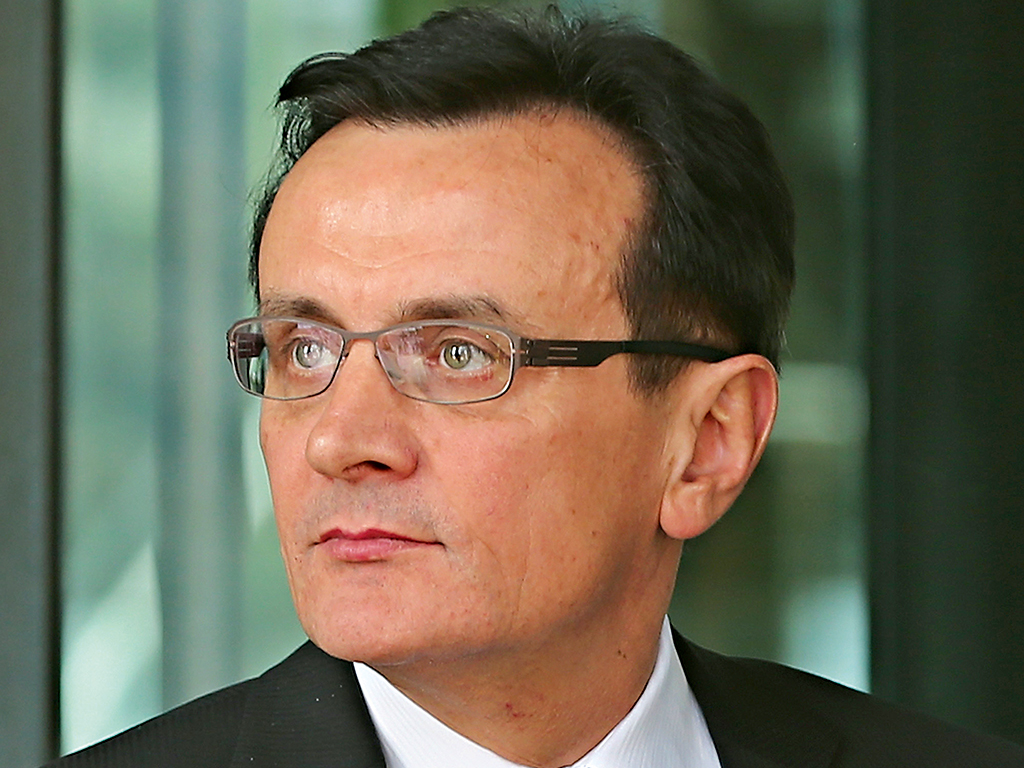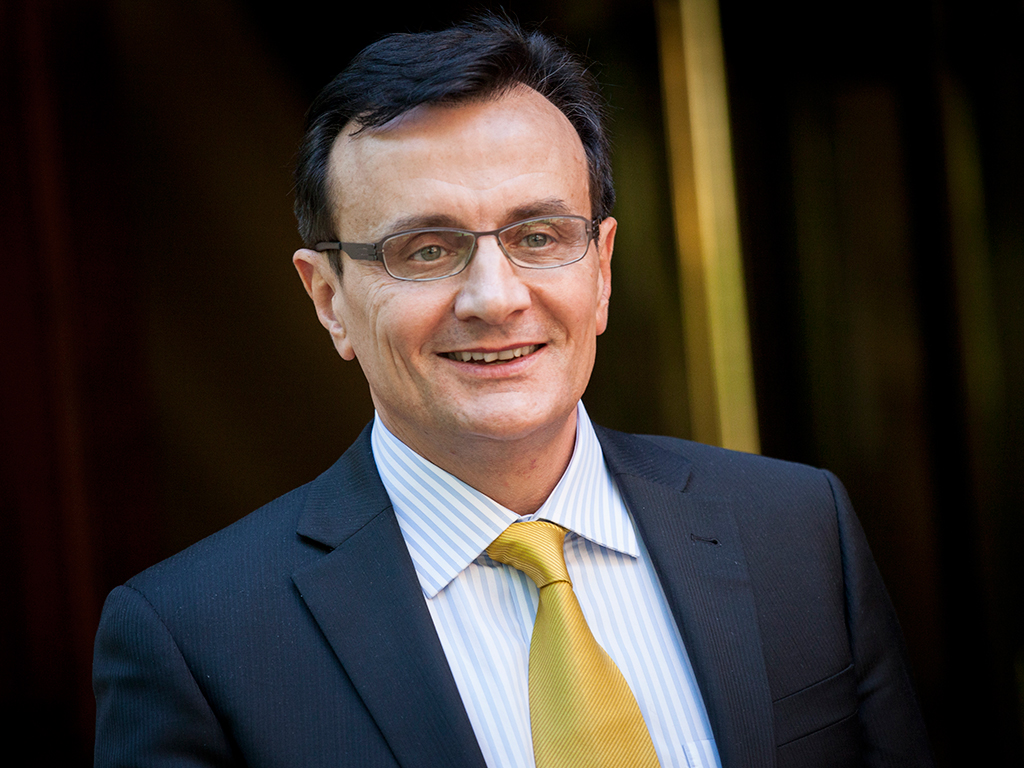
When Pascal Soriot was appointed CEO of AstraZeneca in 2012, the pharmaceutical giant was in poor health compared with its European counterparts. One of the main reasons for the company’s decline in profits – a fall of 31 percent between the second and third quarters of 2012 – was the expiration of a number of its pharmaceutical product patents, including Crestor (a treatment for cholesterol) and Nexium (a heartburn remedy), with no new products to replace them. In short, AstraZeneca had, for a number of years, failed to invest in R&D. This was something Soriot needed to address quickly.
Pascal Soriot CV

BORN
1959, France
EDUCATION
Doctorate, Veterinary Medicine, National Veterinary School of Alfort
EXPERIENCE
1987: Soriot began his career as a district sales manager with Roussel Uclaf, which, at the time was the second-biggest pharmaceutical company in France
1994: After seven years with Roussel Uclaf, which also included a stint as sales and marketing manager, Soriot was promoted to divisional global marketing director
1996: Soriot became general manager at Hoechst Marion Roussel Australia, having overseen the German company’s acquisition of Roussel Uclaf
2012: Soriot was hired as CEO of AstraZeneca in 2012, taking over the company at a time when it was experiencing sharp falls in its profits and lack of R&D investment
First, Soriot announced AstraZeneca would be lightening its workforce to the tune of 2,300 employees. The majority of these staff were employed in the production line of pharmaceuticals. He proposed a refocusing of innovation on the areas of heart disease, diabetes, oncology, respiratory diseases and inflammation. In addition, he announced plans to push forward the expansion of Moderna, a biotech company, and the Karolinska Instutet medical university.
Another initiative was to relocate the company’s headquarters to its R&D hub in Cambridge, which for decades has been a hotbed for upcoming, talented scientists. The result of this move, he said, would be the launch of 10 new medicines by 2020. Finally, he proposed that AstraZeneca focus on emerging markets – principally China, a region that at the time accounted for some €4.41bn in revenue.
Soriot has also had to make some tough decisions in terms of restructuring AstraZeneca’s operations. Shutting down the company’s R&D facility in Cheshire’s Alderley Park was one of them. However, this move was part of his master plan for the future development of the company as a whole. In 2013, AstraZeneca opened a new, state-of-the-art, R&D operation in Cambridge, giving company-employed scientists the chance to tap into the abundance of local academics and entrepreneurs.
Soriot said: “In Cambridge we will be part of the science research hub, surrounded by the most prestigious institutions in the world. The Golden Triangle of Cambridge, Oxford and London can compete on a global scale. We’re very committed to being in the Golden Triangle; it’s one of the most prestigious centres in the world.”
Commitment to drug development
In 2013, Soriot elected to revive the development of the ovarian cancer drug olaparib, which had been put on the backburner when it failed in a Phase II trial. He said: “When I saw olaparib, for me, it was a clear reflection of good science and poor management… essentially, the commercial teams were under-excited.” Today, with the company’s renewed focus on oncology, the treatment is among its most promising products, both in terms of cancer treatment and its potential to re-instate AstraZeneca as a frontrunner in the development of cancer drugs.
Another product, Brilinta, a pharmaceutical developed with the aim of combating heart disease, had also been shelved prior to Soriot’s appointment. But today, with a renewed push on R&D, Soriot predicts the drug will bring in revenues of €2.57bn by the end of 2014.
AstraZeneca in numbers
Founded in 1999
50,000 employees
€18.8m revenue 2013
€1.88m net income 2013
As testament to Soriot’s commitment to increasing R&D, AstraZeneca has dedicated 50 percent of its pipeline to biologics, and is also measuring up options for bringing these new products to market. Soriot said: “We have made good progress, as by 2016 we wanted nine in late stage project development but we will have 12 by next year.”
Soriot has also underlined AstraZeneca’s commitment to focusing its efforts on opportunities in emerging markets. He believes the company has a lot to offer in regions like South East Asia, where health problems such as cardiovascular disease and diabetes are common, but currently underserved by the larger drug companies.
Mergers and acquisitions
Soriot has a track record of handling mergers and acquisitions, starting with the takeover of Roussel Uclaf by Hoechst. He was also involved in the Aventis deal, a company that was subsequently sold to Sanofi. His predecessor at AstrZeneca, David Brennan, attempted to address the company’s lack of R&D innovation through acquisitions, principally with the purchase of Medimmune – a US biotechnology company. The deal, however, met a lukewarm reception from investors and the merger never really got off the ground. Upon his appointment, Soriot saw the integration was not working to plan. He oversaw the decentralisation of Medimmune and its reinstatement as an autonomous subsidiary.
31%
fall in profits Q2-Q3 2012
In April 2014, European pharmaceutical behemoth Pfizer made a €87bn takeover bid for AstraZeneca. But Soriot was not interested. On the face of it, the offer was very generous, but Soriot knew better. At the heart of the matter lay the pharmaceutical compound AZD9291, which can dramatically reduce the size of lung tumours and possibly, with further testing, other strains of cancer. Soriot said at the time of the drug’s announcement: “This is an agent that could go from the laboratory all the way to patients and market approval in record time. This could be the shortest-ever development in the industry.” And this rings true on commercial ground as well: AstraZeneca recently predicted sales of €2.2bn for AZD9291.
In the midst of Pfizer’s mammoth bid to acquire AstraZeneca, Soriot forecast the company would achieve €33bn in revenues by 2023. And it was that figure which convinced investors and shareholders the company would fare better alone.

